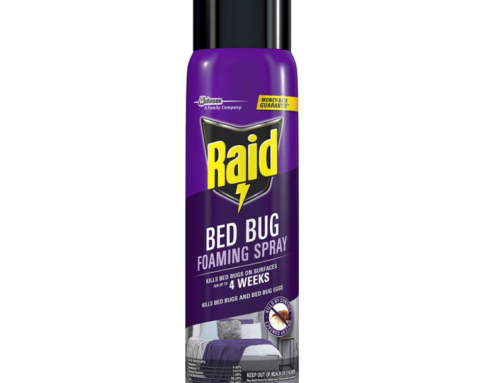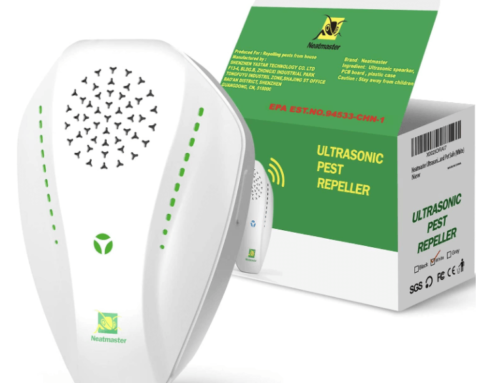Table of Contents
Bed bug bites are painful and getting rid of the blood-feasting pest isn’t easy. Here’s everything you probably need to know about bed bugs.
What Are Bed Bugs?

Bed bugs (Cimex lectularius) are six-legged, flat, oval-shaped, small, wingless insects. They suck blood from humans or animals and range from white to brown colors. Soon after they feed, their apple seed like body swells and attains rusty red color.
Usually, their maximum size is 0.5 centimeters, and they are visible to the normal eye if you observe closely. Bed bugs infer their name from their favorite hiding place, namely bedding or mattresses. They have a flat body as thin as a credit card and hence can squeeze into tiny spaces.
These bed bugs tend to live in groups in their hiding places. Their existence does not signify that your home is dirty, as they are also found in most immaculate places. You need to remember the fact that they feed on blood and not on dirt, making it a possibility to exist wherever blood-loaded humans are there.
Where Are Bed Bugs Mostly Found?
Bed bugs are annoying for both homeowners and businesses such as hotels, dorms, hostels, and hospitals where people rest on beds at night. Sometimes they are also found in colleges, universities, retail stores, libraries, movie theaters, and such places that are crowded and where people sit for a considerable time.
In other words, bed bugs can be found in most common items or places.
Where Do Bed Bugs Come From?
The most common cause of bed bugs infestation, recognized as of now, is travel. Flat bodies and the plain non-prominent color give them profuse camouflage to hitchhike safely and obscured.
The bed bugs are common in developing countries and are becoming common in developed countries due to international travel. They hide in the apartments, shelters, hotel rooms, and in most of the crowded places. These little creatures attach themselves to the clothes, luggage, furniture, pets, and other objects using which they transport themselves from one place to another.
The increasing number of people are traveling from many countries where people come from distant locations for jobs, or they travel for a vacation. During these visits, their belongings inadvertently get infested and eventually carry back these bed bugs to their place, spreading the infestation.
Can Bed Bugs Fly?
Though they cannot fly, they do have a knack of moving swift enough to disappear in a jiffy. It does not matter wherever you spot these bugs; they are gone in a blink of the eye. Every surface like a floor, bed, ceiling, wall, and any such surface they maneuver with the same lightning speed.
How Fast Could Bed Bugs Breed?
Female bed bugs lay eggs, and these eggs develop into nymphs. These nymphs need to shed their skin five times before they attain maturity. This skin shedding process can occur only after they feed on blood, and it can be completed in months. The nymph successfully develops into mature bed bugs, depending on its feeding aptitude.
However, once they turn into adults, the female bed bugs can lay hundreds of eggs over their lifetime of 10 months and produce three generations per year. The size of their egg is just of a dust speck of 1mm size and white.
The female bed bugs can lay one to five eggs every day and lays from 200 to 500 eggs in a lifetime. They lay their eggs in tight cracks, and these eggs hatch into nymphs in two weeks.
As mentioned above, bed bugs will be ready for feeding on this stage and need to pass four instar stages shedding five molts before becoming an adult. They need room temperature and at least five weeks to complete this process apart from the constant feeding. [1]
Do Bed Bugs Bite?
Yes, bed bugs do bite their host, but you cannot feel their bite as they inject a numbing agent before they feast on you. Interestingly, this numbing agent also contains an anticoagulant that allows the blood to flow freely, causing otherwise clots due to the natural body defense mechanism when wounded.
They leave straight rows of red, itchy bite marks, and that is the only way for you to know that you are bitten by bed bugs. As they sneak out only during your deep sleep time and do not sting, these bite marks are the sole identifying factors to start a scavenger hunt. Their biting activity is at peak just before the dawn, and their usual places of attack include arms or shoulders.
They pierce your skin and draw blood using their elongated beak. Though most of the bugs feed for three minutes, there are instances of feeding up to 10 minutes.
How To Treat Bed Bug Bites?
Bed bugs bites are not infective by themselves though they are itchy. However, if you scratch, there is a chance of secondary infection. You can apply any antibiotic cream/ ointment or antiseptic lotion to alleviate the itching. [2]
If the itch is unbearable, you may consider oral antihistamines and corticosteroids, which will usually suffice. Nonetheless, if you still experience symptoms, it is best to visit a doctor.
What Do Bed Bugs Feed On?
Bed bugs are nocturnal creatures and hide throughout the day in beds, furniture, paper trash, wood, and floors during the day. During the night time, they feed on human blood when they are fast asleep. They are incredibly proficient at feeding on their prey at the most unnoticed hour of the night.
Bed bugs require at least three minutes of feeding before they are full, and soon after, they return to their hiding place for digesting their meal. Once full, they become engorged to an extent where they drop off from the host body, as they can no longer engage themselves. They can live for weeks without feeding.
Do Bed Bug Spread Disease?
Thankfully there do not carry any infections like other insects but are more of a nuisance. Several research reports support this claim. Though they were blamed for spreading diseases in a few instances, there is no evidence of the same. [3].
How To Identify The Bites Of Bed Bugs?
As said earlier, you rarely see bed bugs live in action or one crawling by. Also, assuming the bites as bed bugs are not right only because of the pattern or redness, and it can be many other things. A visual inspection can rule out mosquitoes, mites, biting gnats, and fleas quickly. However, you need solid proof for confirming those bites as bed bugs.
The only way to confirm is by collecting the evidence, such as the bed bugs itself or their eggs. Another easier way is to look for the bloodstains along the seams of the mattress or to look for the droppings near their hiding places. Usually, they hide in the dark crevices and corners of the floor, wall, or furniture.
How To Avoid Bed Bugs?
As the bed bugs infestation occurs through a few sources, by inspecting them closely, you can avoid your place from infestation.
Secondhand Furniture
Also, secondhand furniture contributes a lot for being the leading cause of introducing bed bugs to a property. Similar is the case with rented or abandoned furniture. As these bed bugs can live without a meal for months, the unused furniture may not be ruled out for bed bugs and needs through investigation.
Checking for the excretions and eggs of these creatures can help in identifying their presence. There are more ways to identify their presence, and you will get to know them as you read through.
Bed Inspection
While traveling, you will need to sleep in various places. Therefore, inspecting the place significantly, the bed can rule out the chances of carrying a bed bugs back with you. Check the mattress seams for blood trails or marks.
Fecal smears and dead bugs are sure shot signs of the existence of bugs. When you suspect the presence of bugs, keeps your luggage as far as possible from the bed.
Inspect The Luggage
Check your clothes, including the inner pockets, for any hiding bed bugs. Then go through the exteriors of your luggage as you zip it. Once you return home, make sure you inspect your luggage thoroughly before you unpack. Even while unpacking, check all your clothes, including the zipped compartments.
Finally, make sure to wash all the clothes and run them in the dryer for at least 20 minutes ensuring all the bed bugs and their eggs, if any, to die. Also, letting them go through another cycle of wash in hot soapy water and re-drying them will ensure no bug related remains will survive. Make sure you use as much heat as possible without damaging your clothes.
How To Check For Bed Bugs?
When you find the bloody trails, dark droppings, the presence of oval brown exoskeletons, aka their skin, which the maturing bed bugs shed several times, is a telltale sign.
You might experience a musty odor in your bedroom, which is nothing but the pheromones released by the bed bugs. However, the pungent smell is possible only when there is a large number of bugs.
Where To Check: Check the upholstery, chairs, couches, curtains, edges of carpets, behind the headboard, under the bed, closet, inside, and around the dresser. Also, check the areas beneath the fitted sheets, mattress piping edges, bed frames, box springs, under the mattress, in the corners of the bed underside.[4]
What If You Cannot Detect: Though you cannot find any bed bugs but wake up every morning with reddish bite marks on your arms and shoulders, you must consider other ways. Either hire a highly trained professional for inspection or install traps that help you detect these bed bugs.
Active Monitors
By placing the interception devices in the most common areas of bed bugs, such as adjacent to the bed. As they contain the attractants, they lure the bed bugs and trap them, making it easier for you to detect them. They usually give results in 2-4 weeks of installation.
How To Get Rid Of Bed Bugs?
Let your landlord, hotel owner, or hospital administrator where you found the bed bugs know about it immediately. It is best to involve professional exterminators once you discover the existence of bed bugs.
As these bugs are sneaky and experts at hiding, only professionally trained persons can deal with them for complete eradication. You will also need to wash all the possibly infested bedsheets, clothes to get rid of eggs or the chemicals sprayed.
When you detect the bed bugs, you may be tempted to go on with DIY methods or use insecticides and pesticides.
Using these chemicals without supervision that too on bed and mattresses is not only ineffective but also dangerous.
- Ineffective because these bugs might still be hiding in several undetected places, which can only be fully identified by a professional exterminator.
- Dangerous because not every chemical is safe for human habitats, and the place is usually washed after use.
As beds and mattresses cannot be washed thoroughly, the chemicals may stay on for long, making them unusable. [5]
Professional Treatment Enough To Eliminate Bed Bugs?
Professional treatment eliminates a high number of bed bugs. However, if they remain even in small numbers, do not take long to blow up into a full-fledged infestation. Owing to their reproduction speed and cryptic lifestyle, they can soon return to their average numbers before treatment.
Therefore, following a few more steps ensure you do not fall victim to them again and again.
- Wash the beddings, curtains, linens, and clothes in hot water and dry them in the highest dryer setting.
- Run the non-washable items such as soft toys, shoes, and similar items for 30 minutes in the dryer.
- Scrub the mattress seams and the whole mattress with a stiff brush to loosen any eggs attached to them. Vacuum the mattress toughly.
- Vacuum under and around the bed using a disposable bag and make sure to detach the waste bag and place it tightly sealed in a plastic bag. Discard it soon into the garbage bin outdoors.
- Cover the mattress and the box springs using a tightly woven zippered encasement preventing the bugs from entering or leaving the mattress.
- Plaster the cracks in the wall and repair the wallpaper where it is peeling using the glue, leaving no place for them to hide.
- Throw off the old mattress and consider getting a new one if it is heavily infested.
In conclusion, bed bugs are stubborn, but you can eliminate them with proper care and attention. By taking appropriate cautionary measures, you can stop them from entering or re-entering your homes.





Leave A Comment